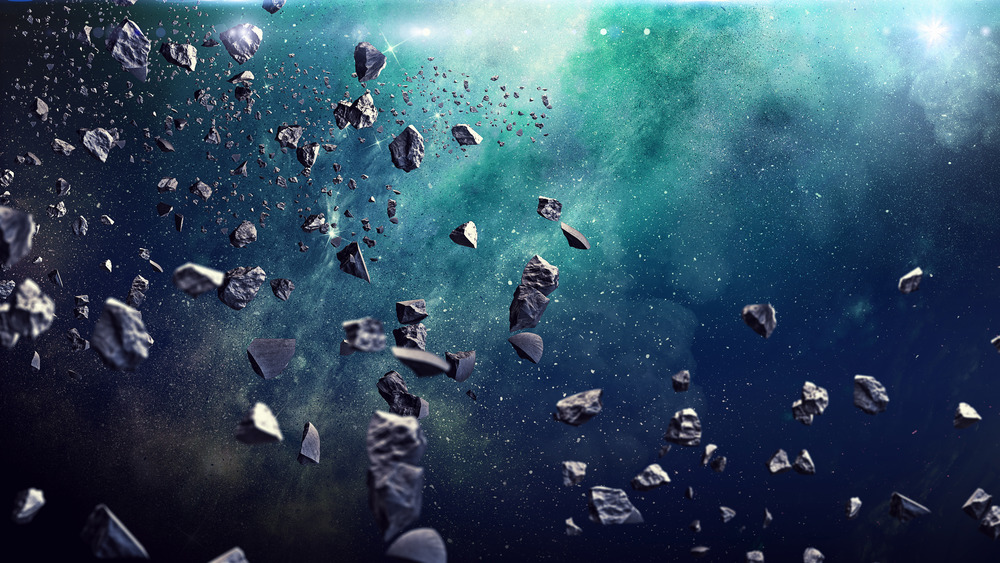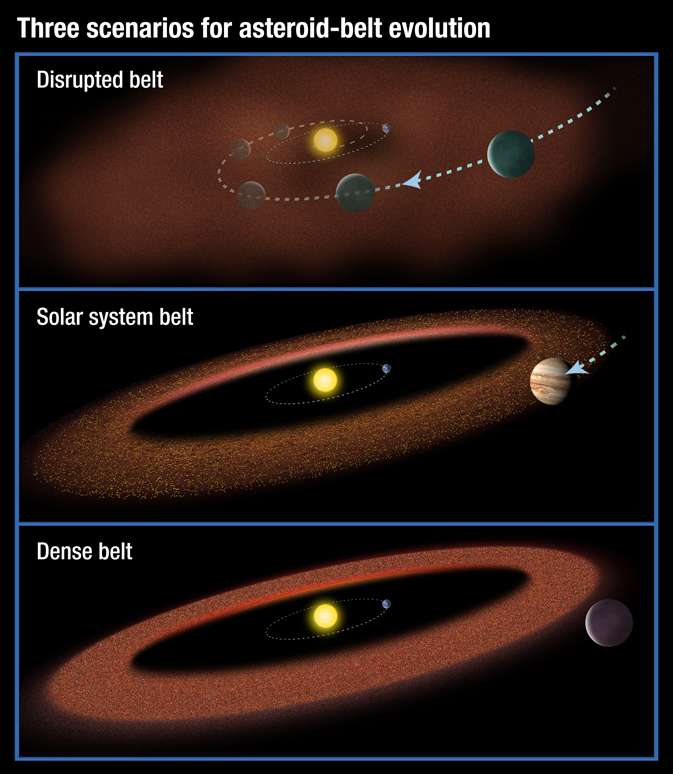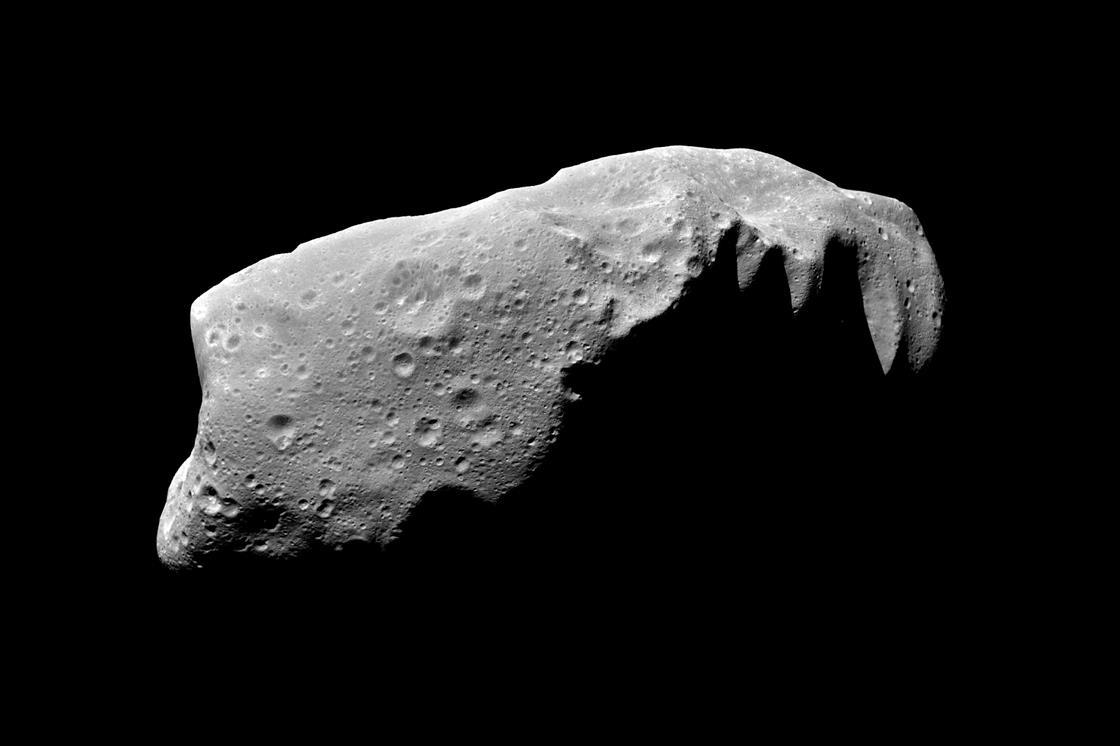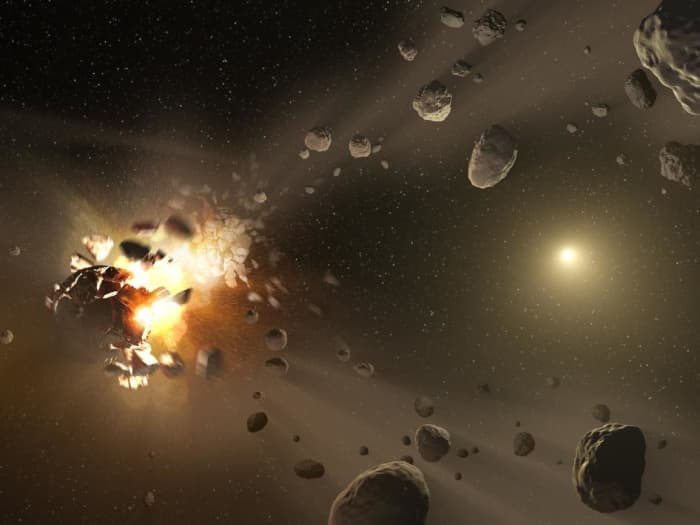How Do Asteroids Form
How Do Asteroids Form - Web asteroids are the rubble left over from the solar system’s formation roughly 4.6 billion years ago. Web asteroids are the left over bits and pieces from the solar system’s early days that didn’t quite make it to being a planet, for one reason or another. An image of a protoplanetary disc around star hl tauri. In the early years of our solar system, lots of small lumps of rock and metal were floating around. Web as gravity pulled it together, the sun formed at its centre, while the rest clumped together to produce many billions of small bodies called planetesimals. They are roughly spherical, have at least partly differentiated interiors, and are thought to be surviving protoplanets. At the outer edges of the asteroid belt, that is between three and three and. Our solar system began about 4.6 billion years ago when a big cloud of gas and dust collapsed. Some of the condensing dust in the cloud became planets. Asteroids are rocky objects primarily found in the asteroid belt, a region of the solar system that.
Although asteroids are present throughout the solar. Web how do asteroids form? The three largest are very much like miniature planets: Asteroids are rocky objects primarily found in the asteroid belt, a region of the solar system that. They are roughly spherical, have at least partly differentiated interiors, and are thought to be surviving protoplanets. Web 1,298,529 known asteroids and 3,881 known comets. Some experienced high temperatures after they formed and partly melted,. When this happened, most of the material fell to the center of the cloud and formed the sun. Asteroids are big chunks of rock that orbit around the sun but are not big enough to be a planet. Asteroids vary greatly in size, from almost 1000 km for the largest down to rocks just 1 meter across, below which an object is classified as a meteoroid.
Web after the initial turmoil, large asteroids collided together and through the process known as accretion planets and dwarf planets were formed. Web how do asteroids form? The three largest are very much like miniature planets: Web asteroids are the rubble left over from the solar system’s formation roughly 4.6 billion years ago. Explore the 3d world of asteroids, comets, and neos. Asteroids are big chunks of rock that orbit around the sun but are not big enough to be a planet. Web the asteroids' compositional differences are related to how far from the sun they formed. These could grow by attracting more. The typical composition of an asteroid depends on its distance from the sun. Asteroids are left over from the formation of our solar system.
New theory on origin of the asteroid belt
Asteroids form the same way planets do. In the early years of our solar system, lots of small lumps of rock and metal were floating around. Asteroids are big chunks of rock that orbit around the sun but are not big enough to be a planet. Web how are asteroids formed? Some experienced high temperatures after they formed and partly.
This Is How Asteroids Form
Web asteroids are the rubble left over from the solar system’s formation roughly 4.6 billion years ago. Although asteroids are present throughout the solar. At the outer edges of the asteroid belt, that is between three and three and. Learn about past and future missions, tracking and. Web 1,298,529 known asteroids and 3,881 known comets.
Asteroid Orbits News Space and for Kids
An image of a protoplanetary disc around star hl tauri. Web asteroids are the left over bits and pieces from the solar system’s early days that didn’t quite make it to being a planet, for one reason or another. Web the first is by composition. Some experienced high temperatures after they formed and partly melted,. Asteroids are rocky objects primarily.
Asteroid Belts Can Be Friendly To Life Space News Astronomy and
The vast majority, however, are much smaller and are irregularl… Web asteroids are small, rocky objects that orbit the sun, just like the rest of the planets and celestial bodies in our solar system. Web how are asteroids and meteoroids formed? Explore the 3d world of asteroids, comets, and neos. Asteroids form through accretion when tiny specks of.
A diagram of the asteroid belt with Earth
Web how are asteroids and meteoroids formed? Learn about past and future missions, tracking and. In the early years of our solar system, lots of small lumps of rock and metal were floating around. Web how are asteroids formed? Web asteroids are the rubble left over from the solar system’s formation roughly 4.6 billion years ago.
Do asteroids hold the key to life on Earth? Feature Chemistry World
The three largest are very much like miniature planets: Web as gravity pulled it together, the sun formed at its centre, while the rest clumped together to produce many billions of small bodies called planetesimals. Web how are asteroids and meteoroids formed? Web asteroids are usually irregular shapes. Web asteroids, sometimes called minor planets, are rocky, airless remnants left over.
The Type of Asteroid to Mine, Part 2 Philip Metzger Meteorite, Iron
Asteroids form the same way planets do. Asteroids are left over from the formation of our solar system. An image of a protoplanetary disc around star hl tauri. The three largest are very much like miniature planets: Web how are asteroids formed?
Why Asteroids Are Important to Humanity Earthly Universe
Web after the initial turmoil, large asteroids collided together and through the process known as accretion planets and dwarf planets were formed. Asteroids vary greatly in size, from almost 1000 km for the largest down to rocks just 1 meter across, below which an object is classified as a meteoroid. These could grow by attracting more. In the early years.
Primordial Asteroids That Never Suffered Massive Collisions all Seem to
Some of the condensing dust in the cloud became planets. Web the first is by composition. Asteroids are left over from the formation of our solar system. Although asteroids are present throughout the solar. At the outer edges of the asteroid belt, that is between three and three and.
What You Need to Know About the Asteroid Impact Calculator Owlcation
Although asteroids are present throughout the solar. At the outer edges of the asteroid belt, that is between three and three and. Web asteroids are small, rocky objects that orbit the sun, just like the rest of the planets and celestial bodies in our solar system. Web how did the asteroid belt form? Asteroids form through accretion when tiny specks.
Web Asteroids Are Small, Rocky Objects That Orbit The Sun, Just Like The Rest Of The Planets And Celestial Bodies In Our Solar System.
Web how are asteroids formed? These could grow by attracting more. In the early years of our solar system, lots of small lumps of rock and metal were floating around. Web the first is by composition.
The Typical Composition Of An Asteroid Depends On Its Distance From The Sun.
Some of the condensing dust in the cloud became planets. Web how do asteroids form? Asteroids are rocky objects primarily found in the asteroid belt, a region of the solar system that. Many meteoroids are formed from the collision of asteroids, which orbit the sun between the paths of mars and.
Web Asteroids Are The Left Over Bits And Pieces From The Solar System’s Early Days That Didn’t Quite Make It To Being A Planet, For One Reason Or Another.
Explore the 3d world of asteroids, comets, and neos. At the outer edges of the asteroid belt, that is between three and three and. Web after the initial turmoil, large asteroids collided together and through the process known as accretion planets and dwarf planets were formed. Web as gravity pulled it together, the sun formed at its centre, while the rest clumped together to produce many billions of small bodies called planetesimals.
Web Asteroids, Sometimes Called Minor Planets, Are Rocky, Airless Remnants Left Over From The Early Formation Of Our Solar System About 4.6 Billion Years Ago.
Learn about past and future missions, tracking and. Asteroids form the same way planets do. Some experienced high temperatures after they formed and partly melted,. Web asteroids are usually irregular shapes.









